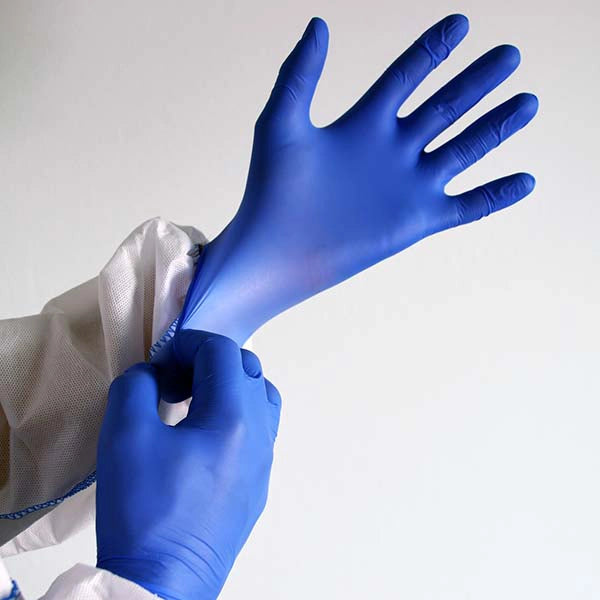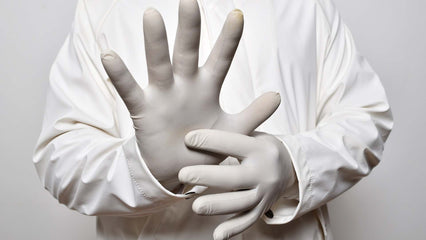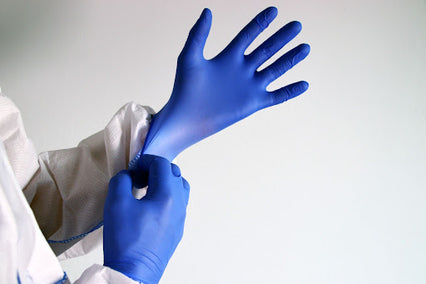Working in a laboratory environment means that you need to take personal safety seriously. Personal protective equipment (PPE) such as gloves, eye protection, and other types of equipment is an absolute must whenever you’re working with chemicals, temperature extremes, physical injury, and biohazards. Hand protection is especially important for lab workers, as a good protective glove will provide high levels of protection from a number of different dangers. Here’s what you need to know about what goes into a good lab glove.
Different Types of Lab Gloves
There are a number of different types of lab gloves, all of which have specific functions. A single laboratory, depending on the materials at use in that lab, may necessitate several different types of high quality gloves ranging from latex and nitrile to Kevlar, leather, and beyond.
Latex Gloves
Often considered the most abundant type of gloves available, latex gloves are, as their name implies, made from latex rubber. These are often used as disposable gloves and are ideal for protecting against incidental contact against biological or water-based hazards. However, latex gloves can trigger latex allergies in wearers and aren’t the most durable gloves when it comes to chemical or physical dangers.
Nitrile Gloves
A major step up from latex gloves, disposable nitrile gloves offer the same excellent biological protection as latex but without the fear of triggering allergies. They’re also significantly sturdier and more chemical resistant than latex gloves. Additionally, nitrile is made from recyclable materials, which differs from latex. While most nitrile gloves are thin and are meant to be disposable, thicker, reusable nitrile gloves are also excellent for extended use.
Neoprene Gloves
An excellent choice for extended contact for just about every type of hazard, neoprene gloves are solid chemical resistance when handling acids, bases, alcohols, fuels, peroxides, hydrocarbons, and phenols. However, when it comes to halogenated and aromatic hydrocarbons, these gloves may not be the best choice.
Polyvinyl Chloride Gloves
These vinyl gloves are made of PVC, a specific type of plastic that’s often used in plumbing pipe construction. While not a great choice for organic solvents, this type of glove is strong against acids, bases, oils, fats, peroxides, and amines, and they offer high abrasion resistance as well.
Kevlar Gloves
These specific-use gloves are usually made from cloth that has been impregnated with Kevlar, a strong, heat-resistant synthetic fiber that has excellent protective qualities. Kevlar is often used in the creation of bulletproof vests; when it’s included in safety gloves, Kevlar protects against cuts, slashes, and other instances where you might need cut resistance. Because Kevlar can be bulky, and because it doesn’t add much protection from biological or chemical contamination, it’s sometimes recommended to wear latex or nitrile gloves over Kevlar for additional protection.
Leather Gloves
Capable of providing some of the most protection when dealing with extreme temperatures, leather gloves are often employed when working with cryonics such as liquid nitrogen. These gloves are designed to prevent frostbite when holding objects that have been treated with the substance, but beware - they are not able to protect your hand from immersion.
Other Lab Glove Concerns
Getting the right type of lab glove for the work your lab is doing is obviously important. While nitrile is excellent for handling routine medical exams or for blood pathology tests, you wouldn’t want to wear a nitrile glove while handling liquid nitrogen, for example. Yet what’s just as important is to make sure you’re wearing a glove that’s sized appropriately for your hand.
Laboratory glove sizes differ, ranging from Small (or even Extra Small) to 2XL, and wearing the wrong size glove can lead to accidents and injuries. Gloves that are too small can be uncomfortable to wear and diminish your manual dexterity, while wearing a glove that’s too large can result in it getting caught in equipment and machinery, possibly pulling it off your hand altogether and exposing you to injury. This makes choosing the right size lab glove just as important as choosing a glove that’s made from the proper materials as well.




